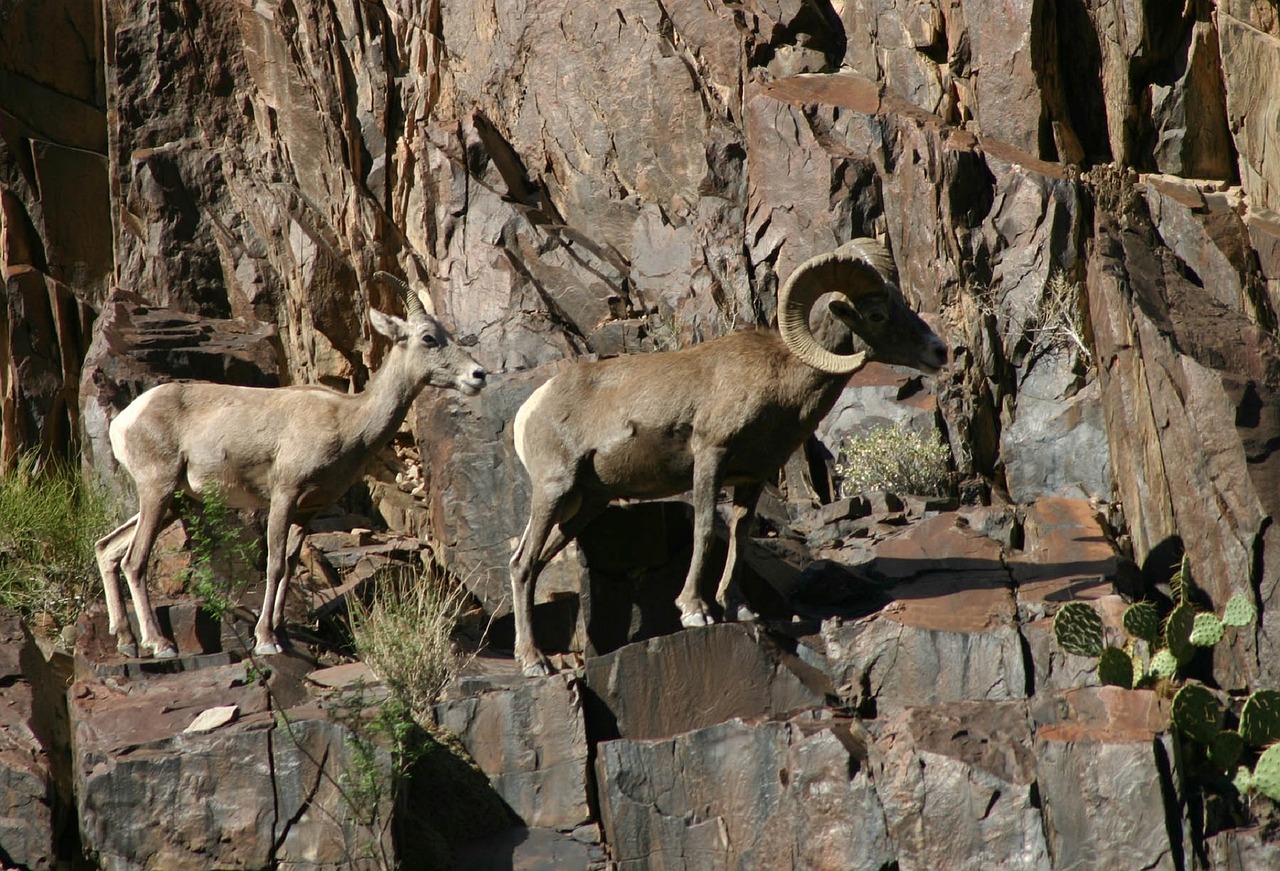Few sights and sounds are more majestic than those created by desert bighorn sheep. Gravity defied as sheer rock walls are traversed. The crack of magnificent horns in battle. Before 1880, scientists estimate that a population of at least 2,500 bighorn roamed West Texas mountain ranges. Even way before 1880. According to the Texas Bighorn Society, petroglyphs found in the Trans-Pecos region indicate the prehistoric presence of wild sheep in the mountains of West Texas. The non-profit organization, dedicated to returning the bighorn sheep to their native ranges in Texas, notes that while herds of the sheep were probably “never extremely large” the utter decimation of their populations can be attributed to unregulated hunting and exposure to disease from domestic sheep, leading to the last of the native bighorns disappearing from Texas by the early 1960s.
About desert bighorn sheep
Desert bighorn sheep are similar in size to mule deer, with adult rams weighing from 115 to 280 pounds and adult ewes coming in somewhat smaller. Both male and female develop horns soon after birth. While ewe horns tend to remain smaller and lighter and do not curl, ram horns can grow over three feet long, have a one-foot circumference at the base, and weigh more than thirty pounds. Rams use their horns for fighting and both male and female use their horns to break open cactus for food. Bighorn sheep have excellent eyesight which rams may take even greater advantage of by rubbing their horns to improve field of vision. Their seemingly effortless movements over rocky terrain is thanks in part to their acute vision along with elastic and concave hooves. According to the Desert Gazette: “They have adapted to this type of terrain to escape predators and protect themselves when bedding and lambing. Desert bighorn can run on level ground at up to 30 miles per hour, and up steep mountain slopes at 15 mph. They can stand comfortably on a ledge as narrow as 2 inches.”
Desert big horn sheep further thrive in arid mountain environments as they are able to go weeks or months sustained only by moisture from food or rainwater fleetingly captured in rock pools. They eat mainly grasses but, as previously noted, are not opposed to cracking open a cactus. They are social animals that form herds, typically separated into bands of ewes and rams until breeding season which runs from around July to October but can fluctuate based on current climate conditions. Desert bighorn sheep have few natural predators and typically live 10 to 20 years.
Population rehabilitation efforts
Thanks to the efforts of TPWD, the Texas Bighorn Society, wildlife conservation groups, private landowners, and others, working for decades now to reestablish bighorns in Texas, surveyors estimated a population of 1,500 sheep in 2015. And the population rehabilitation efforts continue to reestablish sheep in all of their native ranges in Texas. In December 2017, TPWD translocated 82 bighorns to Black Gap Wildlife Management Area (WMA) in West Texas, about 55 miles south of Marathon, from nearby Elephant Mountain WMA in Alpine. TPWD has a terrific video, about 9 minutes long, that documents relocation efforts from Elephant Mountain WMA to Big Bend Ranch State Park in 2011. Highly recommended if you want to see how the sheep are initially captured by helicopter and then transferred by truck but, be forewarned, if you’re not already in West Texas reading this, you may want to pack your bags and hit the road. Watch the video here.
It’s hard to not feel a passion stirred for these magnificent creatures. It was in 1981 that a small group of big horn advocates formed the Texas Bighorn Society. Like the desert bighorn sheep they’re dedicated to, this group continues to thrive. This past June the group hosted its 30th Annual Roundup, a two-day event held this year in Austin. If you’re feeling likewise sheepish, visit https://www.texasbighornsociety.org for more information on the Texas Bighorn Society and much more information on desert bighorn sheep in Texas.









